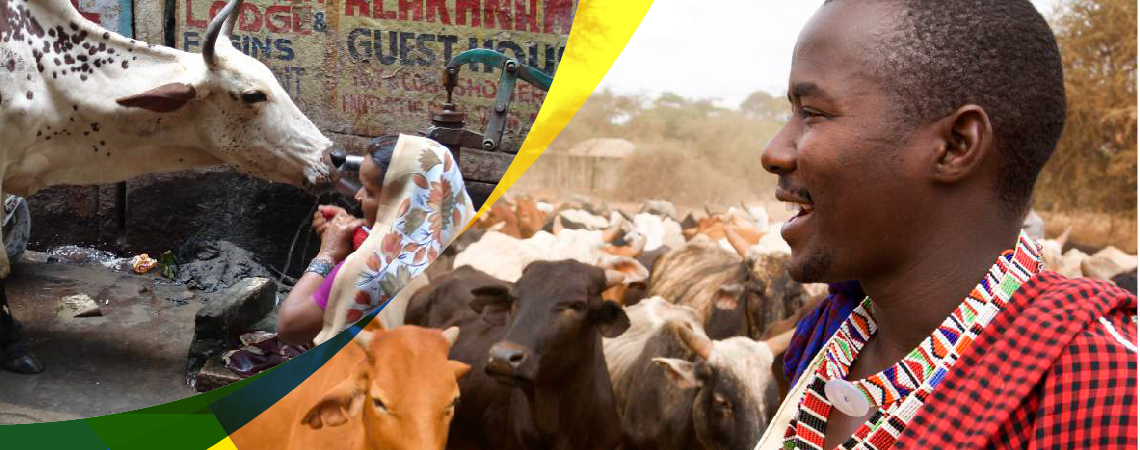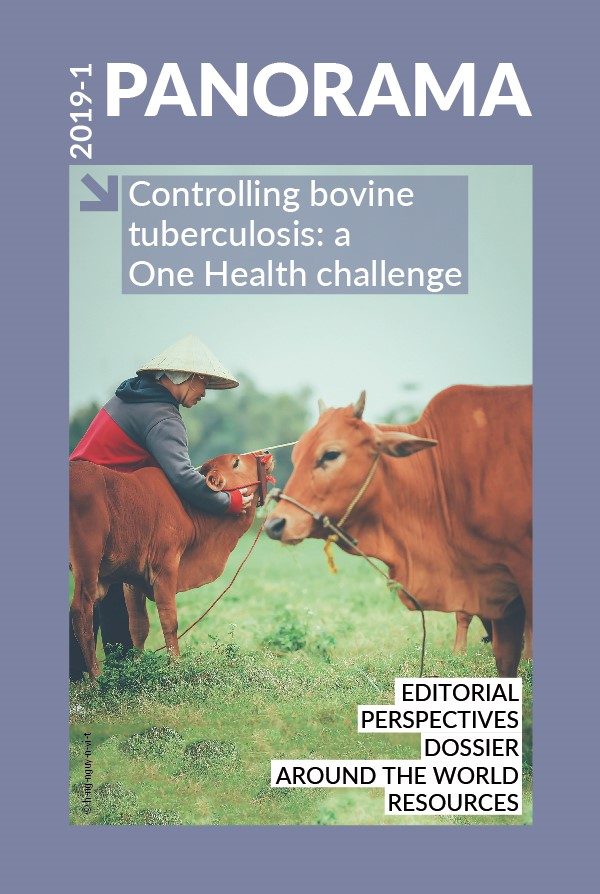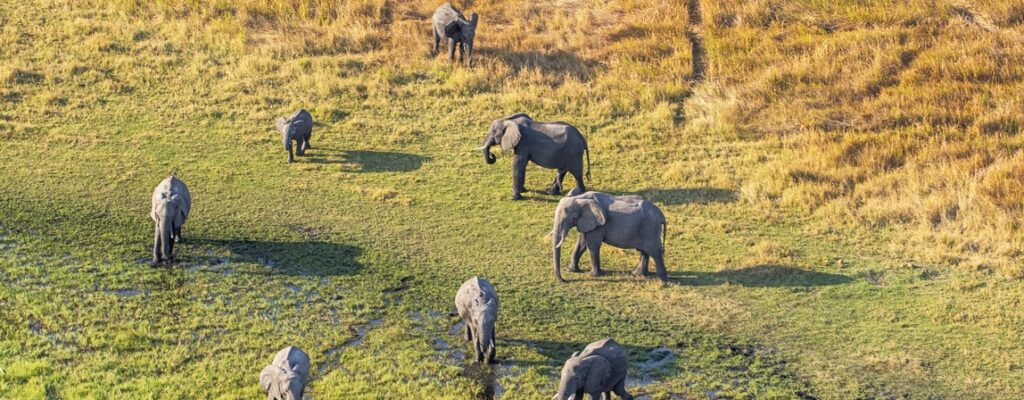Perspectives Posted on 2019-04-30 18:48:01
Roadmap for zoonotic tuberculosis
A ‘One Health’ initiative to combat zoonotic tuberculosis
Keywords
Authors
Amina Benyahia(1), Anna S. Dean(2), Ahmed El Idrissi(3), Elisabeth Erlacher-Vindel(4), Simona Forcella(5), Paula I. Fujiwara(6), Glen Gifford(7)*, Juan Lubroth(8), Francisco Olea-Popelka(9,10) & Gregorio Torres(11)
The above people were members of a core writing team for the Roadmap for Zoootic Tuberculosis. See the Roadmap for Zoonotic Tuberculosis for a complete list of contributors.
* Corresponding author: g.gifford@oie.int
(1) Scientist, Department of Food Safety and Zoonoses, World Health Organization (WHO).
(2) Technical Officer, Global Tuberculosis Programme, World Health Organization (WHO).
(3) Senior Animal Health Officer, Food and Agriculture Organization of the United Nations (FAO).
(4) Head, Antimicrobial Resistance and Veterinary Products Department, World Organisation for Animal Health (OIE).
(5) Policy Officer, DG SANTE, European Commission, Brussels, Belgium.
(6) Scientific Director, International Union Against Tuberculosis and Lung Disease.
(7) Chargé de mission, Antimicrobial Resistance and Veterinary Products Department, World Organisation for Animal Health (OIE).
(8) Chief Veterinary Officer, Food and Agriculture Organization of the United Nations (FAO).
(9) Associate Professor, Department of Clinical Studies, College of Veterinary Medicine & Biomedical Sciences, Colorado State University, Fort Collins, Colorado, United States of America.
(10) Zoonotic TB Sub-Section, International Union Against Tuberculosis and Lung Disease.
(11) Acting Head of the Science Department, World Organisation for Animal Health (OIE).
The designations and denominations employed and the presentation of the material in this article do not imply the expression of any opinion whatsoever on the part of the OIE concerning the legal status of any country, territory, city or area or of its authorities, or concerning the delimitation of its frontiers and boundaries.
The views expressed in this article are solely the responsibility of the author(s). The mention of specific companies or products of manufacturers, whether or not these have been patented, does not imply that these have been endorsed or recommended by the OIE in preference to others of a similar nature that are not mentioned.
Global initiatives to address bovine and zoonotic tuberculosis* are coordinated through a Tripartite (FAO/OIE/WHO) partnership and the International Union Against Tuberculosis and Lung Disease (The Union) [1]. In 2017, the OIE, WHO, FAO, and The Union, jointly launched the first Roadmap for Zoonotic Tuberculosis [2, 3, 4, 5, 6], outlining a plan to combat zoonotic tuberculosis using a One Health approach.
 The roadmap’s three core themes are to:
The roadmap’s three core themes are to:
a) improve the scientific evidence base
b) reduce transmission at the animal–human interface
c) strengthen intersectoral and collaborative approaches.
 Ten priority areas are highlighted under these core themes. Addressing these areas will require: improving surveillance and diagnosis, addressing research gaps, improving animal health and food safety to reduce the risk to people, increasing awareness, fostering One Health approaches, and advocating for investment to support the control of bovine and zoonotic tuberculosis.
Ten priority areas are highlighted under these core themes. Addressing these areas will require: improving surveillance and diagnosis, addressing research gaps, improving animal health and food safety to reduce the risk to people, increasing awareness, fostering One Health approaches, and advocating for investment to support the control of bovine and zoonotic tuberculosis.
The OIE contributes to addressing these priority areas through its publication of harmonised international technical standards [7, 8] and related information; an extensive scientific network of Collaborating Centres and Reference Laboratories [9]; its management of a project for the production and evaluation of an international reference standard bovine tuberculin; its management of a global animal disease monitoring and reporting system, WAHIS [10]; and its development of training and capacity-building programmes for Veterinary Services.
________________________________________
* ‘zoonotic TB’ refers to disease caused by M. bovis infection in people and ‘bovine TB’ refers to disease caused by M. bovis infection in animals
http://dx.doi.org/10.20506/bull.2019.1.2910
References
- World Organisation for Animal Health (OIE). – Zoonotic tuberculosis.
- World Health Organization (WHO), World Organisation for Animal Health (OIE) & Food and Agriculture Organization of the United Nations (FAO) (2017). – Roadmap for Zoonotic Tuberculosis.
- Olea-Popelka F., Muwonge A., Perera A., Dean A., Mumford E., Erlacher-Vindel E., Forcella S., Silk B., Ditiu L., El Idrissi A., Raviglione M., Cosivi O., LoBue P. & Fujiwara P.I. (2017). – Zoonotic tuberculosis in human beings caused by M. bovis — a call for action. Lancet Infect. Dis., Personal View, 17 (1), e21–e25. https://doi.org/10.1016/S1473-3099(16)30139-6.
- Dean A.S., Forcella S., Olea-Popelka F., El Idrissi A., Glaziou P., Benyahia A., Mumford E., Erlacher-Vindel E., Gifford G., Lubroth J., Raviglione M. & Fujiwara P. (2018). – A roadmap for zoonotic tuberculosis: a One Health approach to ending tuberculosis. Lancet Infect. Dis., 18 (2), 137–138. https://doi.org/10.1016/S1473-3099(18)30013-6.
- Olea-Popelka F. & Fujiwara P.I. (2018). – Building a multi-institutional and interdisciplinary team to develop a zoonotic tuberculosis roadmap. Front. Public Health, 6 (Art 167). https://doi.org/10.3389/fpubh.2018.00167.
- United Nations (UN) (2018). – High-Level Meeting on Ending TB, 26 September 2018, New York. UN General Assembly.
- World Organisation for Animal Health (OIE) (2018). – Chapter 8.11. Infection with Mycobacterium tuberculosis complex. In Terrestrial Animal Health Code. 27th Edition.
- World Organisation for Animal Health (OIE) (2009). – Chapter 3.4.6. Bovine tuberculosis. In Manual of Diagnostic Tests and Vaccines for Terrestrial Animals. 7th Edition.
- World Organisation for Animal Health (OIE). – OIE Reference Laboratories: Contact information for designated experts.
- World Organisation for Animal Health (OIE). – World Animal Health Information Database (WAHIS) Interface.












